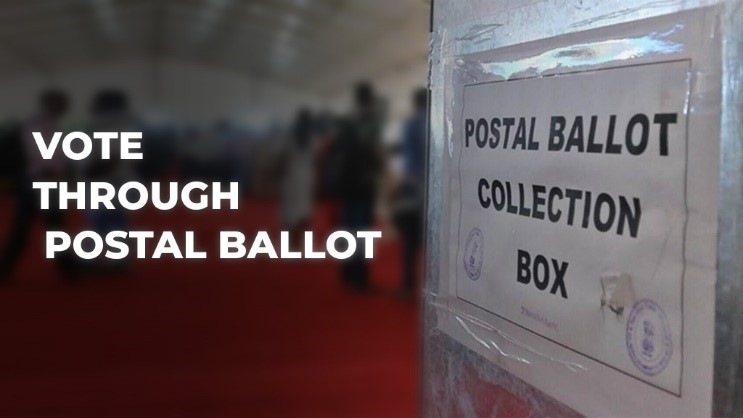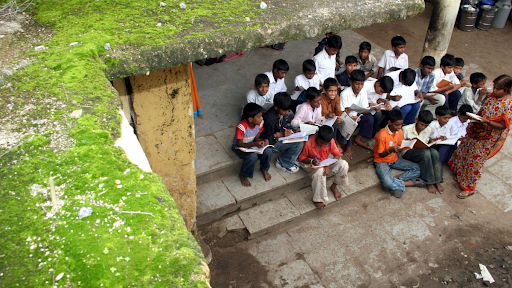Description

Disclaimer: Copyright infringement not intended.
Context
- The Union Law Ministry amended the Conduct of Elections Rules-1961.
Amendment to Postal Ballot Eligibility:
- Senior citizens aged 85 and older now eligible for postal ballots in upcoming elections, an increase from the previous limit of 80 years.
- Amendment made to Conduct of Elections Rules-1961 after consulting the Election Commission of India.
- Postal ballot facility available for a "notified class of electors," including essential services workers, persons with disabilities, Covid-19-infected or suspected cases, and now senior citizens above 85 years.
Implementation and Procedure:
- Poll officials visit the homes of eligible senior citizens to facilitate filling up of postal ballots.
- Procedure conducted after informing political parties and under videography to ensure transparency.
- Initially extended to persons with disabilities, essential services workers, and senior citizens above 80 years in 2019.
Previous Amendments and Changes:
- During Covid-19 pandemic, extended to those infected or suspected of being infected with coronavirus, starting with Bihar Assembly elections in 2020.
- Law Ministry had earlier amended the rule to extend the facility to those above 65 years in June 2020 but was eventually reverted back to 80 years in August 2023.
- EC decided not to extend the facility to those above 65 years due to impracticality in managing polling parties for the expanded age group.
Recent Developments in a nutshell
- As per the electoral roll released on February 8, out of the 96.88 crore eligible voters in India, 1.85 crore were aged above 80 years.
- The rules now allow postal ballot voting for a specific group of voters, including essential services workers, persons with disabilities, Covid-19-infected or suspected individuals, and senior citizens.
- Previously, senior citizens were defined as those aged above 80 years in Section 27(A) (e) of the Conduct of Elections Rules-1961. However, this has been amended to raise the age to above 85 years in the same rule.

All about Postal Ballots
- Postal voting, also known as absentee voting, is a method of voting in which electors cast their ballots by mail rather than in person at a polling station.
- This method is particularly useful for individuals who are unable to vote in person due to various reasons, such as being away from their home constituency, having a disability, or being engaged in essential services on election day.
Eligibility for Postal Ballots
The eligibility criteria for postal ballots vary depending on the specific election and jurisdiction. However, some common categories of eligible voters include:
- Service voters: Members of the armed forces, paramilitary forces, and other government employees deployed on election duty far from their home constituencies.
- Absentee voters: Individuals who are unable to vote in person due to reasons such as being away from their home constituency for work, illness, or disability.
- Electors on election duty: Government officials and polling staff who are assigned duties at polling stations other than their own.
- Electors under preventive detention: Individuals who are detained under preventive custody orders during the election period.
Applying For a Postal Ballot
- To apply for a postal ballot, eligible voters must submit an application to the Returning Officer (RO) of their respective constituency.
- The application form typically requires personal details, voter identification information, and the reason for seeking a postal ballot. The RO verifies the eligibility of the applicant and issues the postal ballot if the criteria are met.
Process of Postal Voting
- Receiving the postal ballot: Once the application is approved, the RO sends the postal ballot to the voter's registered address. The ballot package typically includes the ballot paper, a declaration form, a secrecy sleeve, and a pre-paid return envelope.
- Marking the ballot: The voter marks their preferred candidate(s) on the ballot paper in the secrecy sleeve to ensure confidentiality.
- Completing the declaration form: The voter completes the declaration form, providing their signature and other relevant details.
- Sealing the envelope: The voter seals the marked ballot paper and the declaration form inside the secrecy sleeve and then places it into the pre-paid return envelope.
- Returning the postal ballot: The voter affixes the postage stamp provided and mails the return envelope to the designated address within the specified time.

Counting of Postal Ballots
- Postal ballots are counted separately from votes cast at polling stations.
- On the designated counting day, postal ballots are collected by the postal authorities and brought to the counting centre.
- The RO and election officials scrutinise the postal ballots to ensure their validity and integrity.
- Valid postal ballots are then added to the respective candidate's vote count.
Significance of postal ballots
- Postal ballots play a crucial role in ensuring that eligible voters exercise their franchise, even when they are unable to vote in person.
- They expand the accessibility of the electoral process and contribute to a more inclusive and representative democracy.
|
PRACTICE QUESTION
Q. Which of the following categories of electors are eligible for postal ballots in India?
A) Senior citizens aged 75 and older
B) Members of the armed forces deployed on election duty
C) Individuals who are unable to vote in person due to being away from their home constituency for work
Select the correct answer using the codes below:
1. A only
2. B and C only
3. A and B only
4. All
Answer 2. B and C only
|












